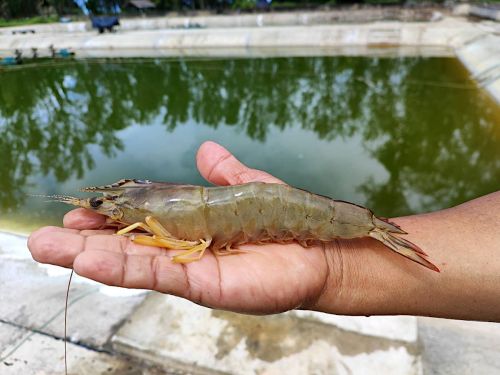Thai Fish Project: A path towards a sustainable aquaculture
31 October 2023 | Pakpitchaya Borvonsin, Izumi Tsurita, Jiraporn Charoenvattanaporn, Pitchaya Chainark, Suttinee Limthammahisorn, and Ikuo Hirono | 1997 Downloads | .pdf | 2.58 MB | Better management practices, Food Security, Safety and Certification, Genetics and Biodiversity, Hatchery and nursery, Health and Biosecurity, Shrimp, Thailand, Education and Training
Thailand has served as the world’s third largest exporter of fishery products for many consecutive years. A significant percentage of these fishery commodities are aquaculture products. Thailand places heavy emphasis on promoting research as the way to facilitate knowledge and capacity development in order to maintain sustainable aquaculture, effectively respond to domestic demand for fishery commodities, and improve competitiveness in the global market.
The Thai Fish Project, more formally titled Utilization of Thailand Local Genetic Resources to Develop Novel Farmed Fish for Global Market, began in 2019. It is led by the Tokyo University of Marine Science and Technology and the Department of Fisheries, Ministry of Agriculture and Cooperatives, Thailand, with other notable research institutes in both Japan and Thailand, involving around 200 research members. This joint research project is funded by Japan International Cooperation Agency and Japan Science and Technology Agency.
The Thai Fish Project aims to promote domestication and wise use of two Thai native aquatic species, namely the Asian sea bass Lates calcarifer and banana shrimp Penaeus merguiensis through increasing productivity, reducing the impact of infectious diseases, and preserving genetic resources. The project also encompasses several specific research topics to ensure that it comprehensively addresses the concerns on safeguarding the food security and enhancing the environmental sustainability as much as possible.
This article describes the main research activities, outputs and future expectations of the Thai Fish Project.
Creative Commons Attribution.

